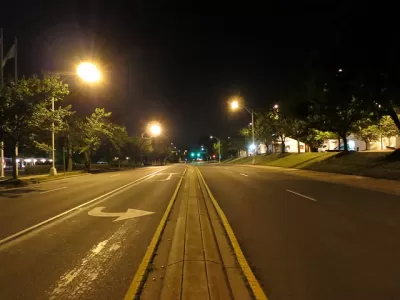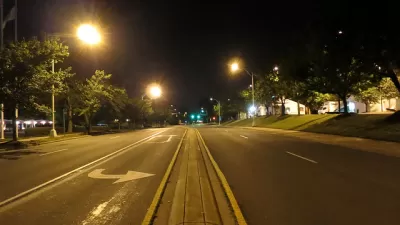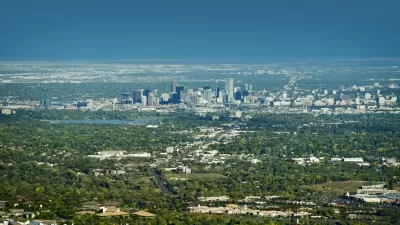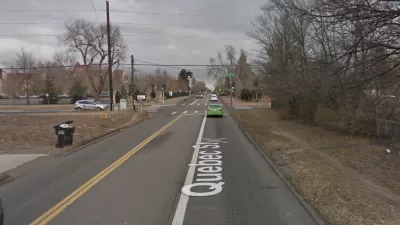It's something we feel intuitively: poorly-designed arterial roads make for less comfortable neighborhoods. That remains the case even if the adjoining residential streets are quiet and safe.

Across the country, it's common to find leafy, pleasant residential streets marred by the traffic-ridden, crime-friendly, unwalkable arterials linking them together. New research from the University of Colorado Denver examines this proximity effect as it concerns dysfunctional major roads.
Building on Donald Appleyard's 1970s research on traffic versus quality of life, the report finds that "high traffic on your street isn't the only type of traffic affecting what you think of where you live. Researchers Wesley Marshall and Carolyn McAndrews found that living near, but not on, a wide, high-traffic arterial can also reduce residential satisfaction."
Rather than overloading arterial roads and highways to create pockets of artificial suburban calm, a more even distribution of vehicle traffic could increase overall quality of life despite higher use of some smaller roads.
Angie Schmitt writes, "In some cases, the study found, people who lived on relatively high-traffic residential streets, but near well-designed low-traffic arterials, had better quality of life than those who lived in the reverse scenario, on a low-traffic street but by a big, badly designed arterial road."
FULL STORY: Study: High-Traffic Arterial Roads Reduce Quality of Life, Even Blocks Away

Study: Maui’s Plan to Convert Vacation Rentals to Long-Term Housing Could Cause Nearly $1 Billion Economic Loss
The plan would reduce visitor accommodation by 25,% resulting in 1,900 jobs lost.

North Texas Transit Leaders Tout Benefits of TOD for Growing Region
At a summit focused on transit-oriented development, policymakers discussed how North Texas’ expanded light rail system can serve as a tool for economic growth.

Why Should We Subsidize Public Transportation?
Many public transit agencies face financial stress due to rising costs, declining fare revenue, and declining subsidies. Transit advocates must provide a strong business case for increasing public transit funding.

How to Make US Trains Faster
Changes to boarding platforms and a switch to electric trains could improve U.S. passenger rail service without the added cost of high-speed rail.

Columbia’s Revitalized ‘Loop’ Is a Hub for Local Entrepreneurs
A focus on small businesses is helping a commercial corridor in Columbia, Missouri thrive.

Invasive Insect Threatens Minnesota’s Ash Forests
The Emerald Ash Borer is a rapidly spreading invasive pest threatening Minnesota’s ash trees, and homeowners are encouraged to plant diverse replacement species, avoid moving ash firewood, and monitor for signs of infestation.
Urban Design for Planners 1: Software Tools
This six-course series explores essential urban design concepts using open source software and equips planners with the tools they need to participate fully in the urban design process.
Planning for Universal Design
Learn the tools for implementing Universal Design in planning regulations.
City of Santa Clarita
Ascent Environmental
Institute for Housing and Urban Development Studies (IHS)
City of Grandview
Harvard GSD Executive Education
Toledo-Lucas County Plan Commissions
Salt Lake City
NYU Wagner Graduate School of Public Service





























